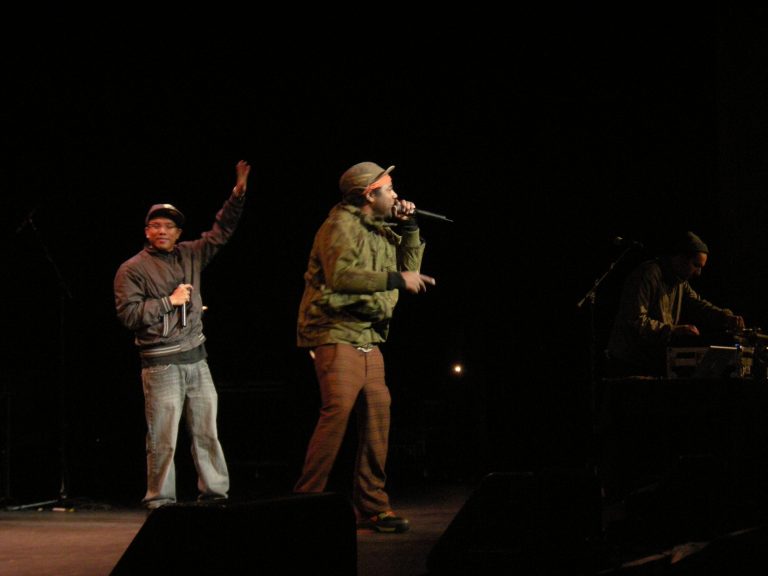Published on August 27, 2020

In 1979, when Daudi Abe was 9, his father took him to Dirt Cheap Records and set him loose to explore. After a few minutes in the Central District store, Abe came up to the cashier carrying a 12-inch vinyl single with the words “Sugar Hill” across the top. “I just liked the sky-blue cover,” he says.
The cashier told him he was buying “Rapper’s Delight,” the hot new single from New York. At home, the record delivered a familiar sound—an interpolation of “Good Times,” by Chic that young Abe recognized from the radio. But it was the talking in the song that transfixed him: “So after school/I take a dip in the pool/Which is really on the wall/I got a color TV/so I can see/The Knicks play basketball.”
“That record changed my life,” says Abe, ’04. “The things they were talking about just really drew me in.” Forty-one years later, Abe pays homage to the hip-hop art form in his latest book, “Emerald Street: A History of Hip Hop in Seattle.” The discovery of that Sugar Hill single primed Abe for Seattle’s burgeoning hip-hop scene, which was just heating up as he became a teenager.
In the years following the city’s rise to national fame, Seattle’s hip-hop culture continued to grow, but stayed true to its Northwest approach. In 2002, while Abe was working on his UW doctorate in education, undergraduates Saba Mohajerjasbi, economics ’03, (DJ Sabzi) and George Quibuyen, history and American ethnic studies ’13, (MC Geologic) formed the Blue Scholars. Rooting their points of view in their own experiences and in the Pacific Northwest, the duo tackled topics like racism and American imperialism from a multicultural perspective.
In his book, Abe also explores the broader themes of race and diversity as they relate to hip-hop: the ’80s crack epidemic, gentrification, and telling details like the years of Black people getting arrested for selling marijuana at the intersection of 23rd and Union, where there is now a white-owned cannabis shop. “The story of hip-hop is an underappreciated aspect of local culture,” says Abe. Capturing that story was one of his driving motivations for the book. “It’s not just about music history,” he says, “it is about Seattle history.”
Continue reading at the University of Washington Magazine.
Originally written by Hannelore Sudermann for the University of Washington Magazine.